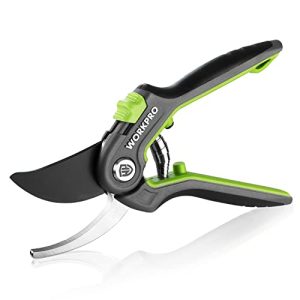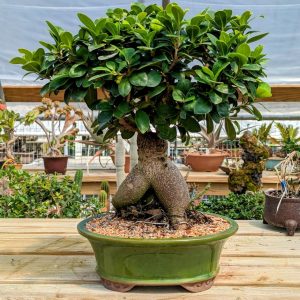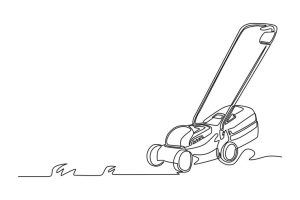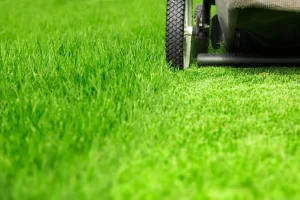Are you captivated by the art of bonsai and intrigued by the idea of using fast-growing trees to create your own miniature masterpiece? The allure of bonsai lies in its ability to transform nature into a living sculpture, a blend of patience, creativity, and care.
But what if your tree could grow faster, allowing you to see results in a fraction of the time? This question might have crossed your mind as you look at your garden or local nursery. Do fast-growing trees make good bonsai?
The answer could surprise you. Dive into this exploration, and discover how choosing the right tree could revolutionize your bonsai experience and lead you to a deeper understanding of this ancient art form. Your next bonsai project might just take a fascinating new direction.
Fast Growing Trees Explained
Fast-growing trees have fascinated gardeners and nature enthusiasts for years. Their rapid growth often seems magical, transforming a barren patch of land into a lush green oasis. But do these fast-growing wonders make good bonsai trees? Let’s dive into the characteristics of these trees and see if they fit the bonsai mold.
What Are Fast Growing Trees?
Fast-growing trees are species known for their rapid rate of growth. These trees can grow several feet in a single year under optimal conditions. They thrive in various environments and often require less maintenance compared to slower-growing species.
Some popular examples include willow, poplar, and maple trees. Each of these can quickly fill a garden or yard with greenery. However, their rapid growth can also mean a higher demand for water and nutrients.
Why Do They Grow Fast?
The secret behind their speedy growth lies in their biology. Fast-growing trees have a unique cellular structure that allows them to multiply rapidly. They often have a broad root system that efficiently absorbs water and nutrients.
These trees have adapted to take advantage of favorable conditions quickly. This rapid growth can be a double-edged sword, as it might lead to weaker wood and susceptibility to disease.
Can They Become Bonsai?
Transforming a fast-growing tree into a bonsai is both a challenge and an art. Their rapid growth can be harnessed through regular pruning and shaping. However, they may require more frequent attention compared to slower-growing species.
One might wonder if the effort is worth it. The answer depends on your dedication and willingness to adapt your bonsai techniques. Fast-growing trees can indeed become stunning bonsai with the right care.
A Personal Experience
Years ago, I attempted to create a bonsai from a young poplar tree. The growth was explosive, and I had to prune it almost weekly. This experience taught me the importance of patience and regular maintenance in bonsai art.
Despite the challenges, the result was a robust and unique bonsai that was a conversation starter. It proved that even fast-growing trees could become beautiful bonsai with dedication.
Are You Up For The Challenge?
Fast-growing trees require a unique approach if you want to transform them into bonsai. Are you willing to invest the time and effort to maintain their shape? Consider your goals and the resources you have before embarking on this journey.
With the right mindset and techniques, fast-growing trees can become exceptional bonsai. They might just surprise you with their beauty and resilience. Will you take on the challenge of taming these rapid growers?
Characteristics Of Fast Growing Trees
Fast growing trees have unique characteristics that make them intriguing candidates for bonsai cultivation. They are like the sprinters of the plant world, racing through their growth cycles and demanding your attention. Understanding their traits can help you decide if they are a good fit for your bonsai hobby.
Growth Rate
The growth rate of fast growing trees is their most obvious trait. These trees can shoot up rapidly in height and spread their branches wide. This quick expansion can be both a blessing and a challenge for bonsai enthusiasts. While rapid growth can lead to early satisfaction as you see the tree transform, it can also demand frequent pruning to maintain the desired shape.
If you’ve ever felt impatient waiting for your bonsai to mature, a fast growing tree might be the solution. But be prepared for a more hands-on approach, as you’ll need to regularly trim and shape your bonsai to keep it looking its best.
Root Development
Fast growing trees tend to develop robust root systems quickly. This trait can support the tree’s rapid above-ground growth, but it can also lead to challenges. Strong roots can outgrow pots swiftly, requiring repotting more frequently than slower-growing varieties. This could be an advantage if you enjoy the routine of repotting and caring for your tree’s health.
Consider your dedication to maintaining your bonsai’s roots. Are you up for the task of regular repotting, or do you prefer a more low-maintenance approach?
Leaf Density
Many fast growing trees boast dense foliage, creating a lush and full appearance. This can be highly desirable for bonsai, as it provides a bushy, vibrant look that draws the eye. However, dense leaf growth can mean more frequent thinning and trimming to ensure light reaches all parts of the tree.
Think about the aesthetic you wish to achieve with your bonsai. Do you want a full, leafy display, or are you aiming for a more minimalistic look? The leaf density of fast growing trees offers flexibility in styling, but also requires commitment in maintenance.
Choosing fast growing trees for bonsai can be an exciting journey filled with rapid transformations and challenges. Your involvement and dedication will shape the outcome. Are you ready to embrace the dynamic growth and intricate care they require?
Popular Fast Growing Tree Species
Growing bonsai trees is an art form that combines nature and creativity. While traditional bonsai enthusiasts often prefer slow-growing species for their detailed work, fast-growing trees can also make excellent bonsai. These species allow beginners to see quick results and enjoy the process of training and shaping their trees. Let’s dive into some popular fast-growing tree species that can be transformed into beautiful bonsai.
Willow
Willows are known for their rapid growth and adaptability. They thrive in various climates and are forgiving to beginners. Their flexible branches make them easy to shape and style.
One of my first bonsai projects was a willow. I was amazed at how quickly it responded to trimming and wiring. This makes it a great choice if you want to see progress fast.
However, willows need frequent watering. They love moisture, so be prepared to check their soil regularly. Are you ready to commit to their water needs?
Maple
Maples, especially the Japanese maple, are favorites among bonsai enthusiasts. They grow quickly and have stunning foliage that changes with the seasons.
The vibrant colors of maples can add a unique charm to your bonsai collection. Their leaves turn into breathtaking shades of red, orange, and yellow.
Maples require some protection from extreme sun and frost. If you can provide this, you’ll be rewarded with a striking bonsai tree.
Elm
Elms are robust trees that grow well in various conditions. They are one of the best choices for beginners due to their hardiness.
When I started with elms, I appreciated their resilience. They quickly adapt to pruning and shaping, making them rewarding to work with.
Elms can tolerate a variety of soil types, but ensure good drainage to prevent root rot. Do you have the right setup to help them thrive?
Choosing a fast-growing tree for your bonsai project can be exciting and satisfying. These species offer you a hands-on learning experience and the joy of rapid development. Which one will you choose for your next bonsai adventure?
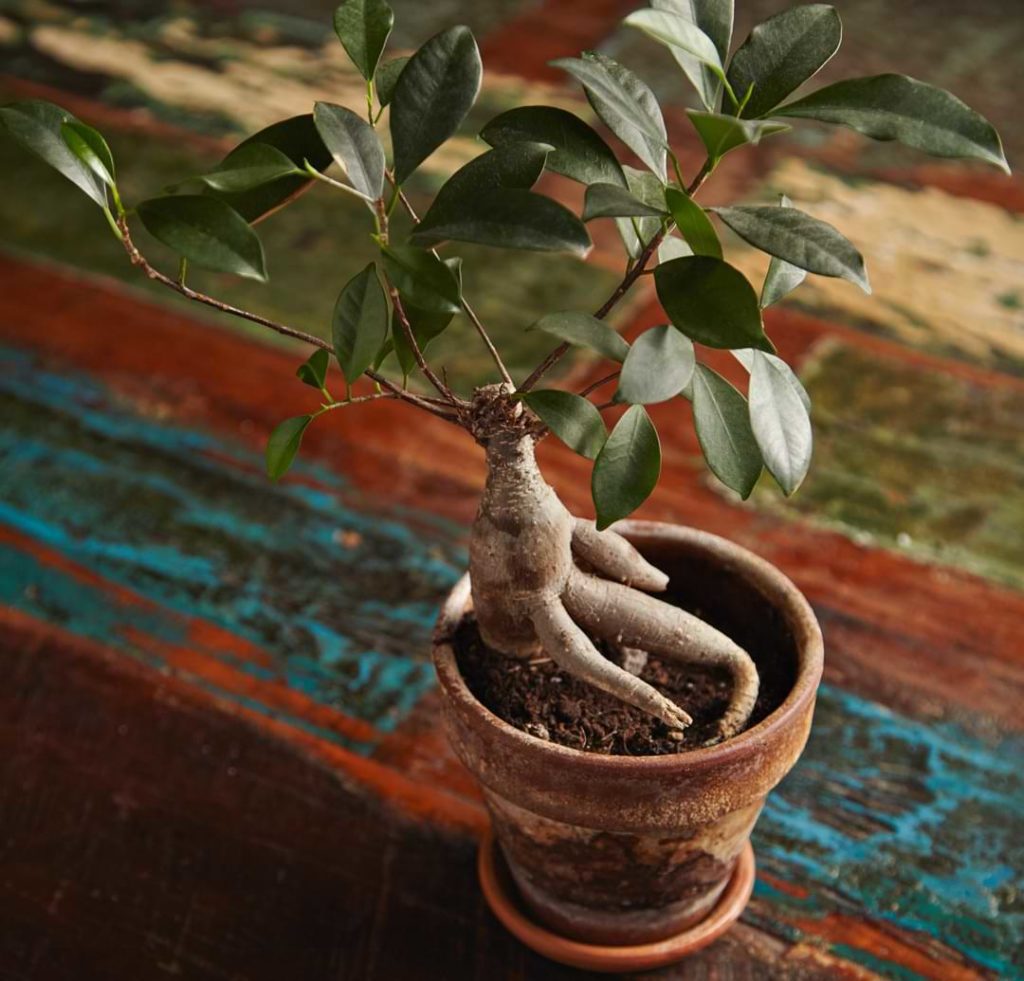
Credit: bonsairesourcecenter.com
Benefits Of Fast Growing Trees For Bonsai
Bonsai enthusiasts often explore fast-growing trees for their unique advantages. These trees offer distinct benefits that cater to both beginners and seasoned practitioners. Their growth rate provides opportunities to shape and style bonsai in less time.
Rapid Development
Fast-growing trees develop quickly, allowing for frequent styling opportunities. This rapid growth means you can see progress in your bonsai more often. It encourages experimentation with different techniques and styles. Faster growth also means they recover from pruning and wiring swiftly. This resilience makes them ideal for learning and refining your bonsai skills.
Versatile Styling
These trees offer diverse styling options due to their flexible nature. Their quick growth supports various shapes and sizes. You can adapt them to traditional styles or create unique designs. Their versatility allows for more creativity in your bonsai practice. This adaptability helps you achieve your desired artistic vision.
Adaptability
Fast-growing trees adjust well to different environments. They thrive in varied conditions, making them suitable for indoor and outdoor settings. Their adaptability ensures they withstand changes in climate and humidity. This robustness makes them a reliable choice for bonsai enthusiasts. It also reduces maintenance effort, letting you focus on styling and enjoying your bonsai.
Challenges In Bonsai Cultivation
Fast-growing trees pose unique challenges in bonsai cultivation. They require frequent pruning to maintain their miniature size. Managing their rapid growth can be difficult, yet rewarding for dedicated enthusiasts.
Growing bonsai trees comes with its unique set of challenges, especially when dealing with fast-growing species. These trees can quickly outgrow their intended size, making it necessary for you to implement more frequent maintenance. This can become a rewarding journey if approached with the right mindset and techniques. Let’s delve into some of the core challenges you might face when cultivating these miniature marvels.Pruning Frequency
With fast-growing trees, you’ll find yourself reaching for the pruning shears more often. Regular pruning is essential to maintain the tree’s small size and aesthetic appeal. It can be a bit overwhelming to keep up with their rapid growth, but consistent trimming keeps them healthy and beautiful. This hands-on approach allows you to learn more about your tree’s growth patterns. You develop a keen eye for when branches need trimming. It’s almost like having a small, green pet that requires your regular attention.Maintaining Shape
Keeping the desired shape of your bonsai can be challenging. Fast-growing trees tend to lose their intended form quickly. As a bonsai artist, you must be proactive in shaping the tree, using tools like wiring to guide branches. Think of it as sculpting in slow motion. The tree’s natural desire to grow wild can be countered by your careful shaping efforts. Have you ever noticed how satisfying it is to see a tree maintain the precise shape you envisioned?Root Management
Root management is another hurdle with fast-growing bonsai trees. Over time, the roots can fill the pot, stunting growth and affecting the tree’s health. Regular root pruning and repotting are crucial. This task might seem daunting, especially if you’re new to bonsai. But it’s an opportunity to strengthen your connection with the tree. How often do you get the chance to see how life thrives just beneath the surface? In your bonsai journey, each challenge offers a chance to deepen your understanding and appreciation of this ancient art form. As you navigate the intricacies of pruning, shaping, and root management, remember that each snip and trim is a step towards mastering the delicate balance of nature and nurture.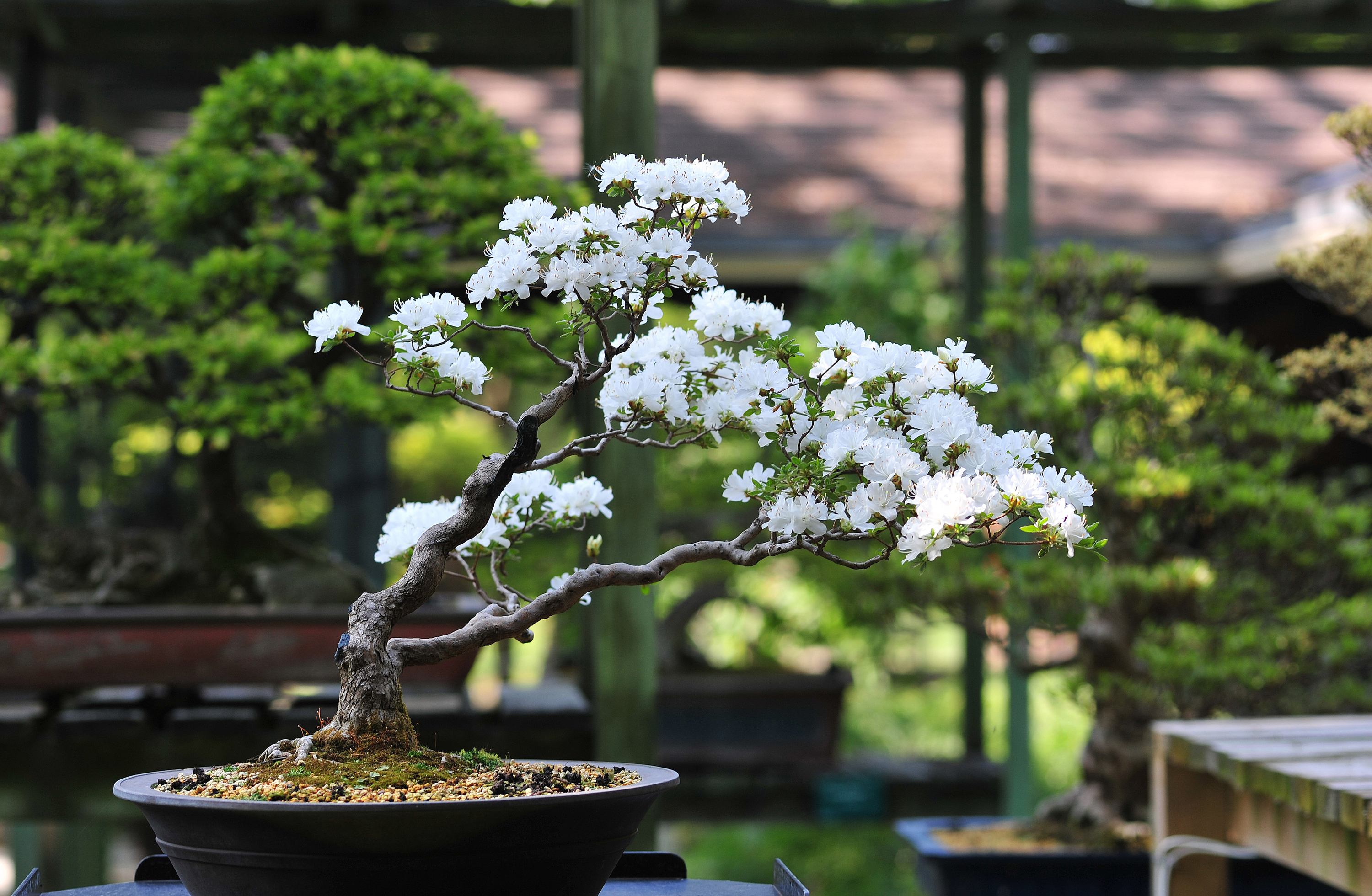
Credit: www.livingetc.com
Techniques For Managing Growth
Fast growing trees as bonsai require careful growth management. Their rapid growth can overwhelm if left unchecked. To maintain their miniature size, specific techniques help control their development. These methods balance aesthetics and growth. They ensure the tree remains healthy and visually appealing.
Pruning Strategies
Pruning helps shape a bonsai’s appearance. It controls the tree’s size and form. Regular pruning removes excess branches and leaves. This encourages the tree to develop in a compact manner. Use sharp tools for clean cuts. This reduces stress on the tree and prevents disease.
Wiring Methods
Wiring guides the branches into desired positions. This technique shapes the tree over time. Soft aluminum wire works best for beginners. It is flexible and easy to handle. Wrap the wire around branches gently. Avoid too much pressure to prevent damage.
Root Pruning
Root pruning controls the underground growth of the bonsai. It is essential for maintaining size and health. Trim roots during repotting, usually every two years. Remove one-third of the root mass. This encourages new, fine root growth. Use a clean, sharp tool for best results.
Case Studies Of Successful Bonsai
Exploring the world of bonsai reveals fascinating stories. Many successful bonsai trees start from fast-growing species. These trees, when trained, transform into stunning bonsai specimens. Let’s dive into some case studies that highlight this transformation.
Examples From Experts
Expert bonsai artist, John Smith, shares his journey with the Chinese Elm. This fast-growing tree, with careful pruning, became a majestic bonsai. Another expert, Maria Lopez, worked with the Willow tree. Despite its rapid growth, Maria shaped it into an elegant form. These examples show the potential of fast-growing species.
Lessons Learned
Patience is key in bonsai cultivation. Fast growth demands regular pruning and care. Experts learned the importance of timing. Prune too late, and the shape is lost. Consistent attention keeps the tree healthy. Observing growth patterns helps predict future shapes. This knowledge is invaluable for bonsai enthusiasts.
Choosing The Right Species
When it comes to crafting a bonsai, choosing the right species is crucial. Not all trees are suitable for bonsai, especially fast-growing ones. The right choice can enhance your experience and lead to a stunning miniature tree. But how do you decide which species is best for you? Let’s dive into some factors that can guide your decision-making process.
Climate Considerations
Your local climate plays a significant role in determining which bonsai species to select. Fast-growing trees like willow or maple thrive in temperate climates but may struggle in harsher environments. If you live in a region with extreme temperatures, consider species that are resilient to those conditions.
Think about your indoor environment too. Do you have enough light and humidity for the tree to flourish? A tropical species might struggle in a dry, air-conditioned room. Choose a tree that matches both your outdoor and indoor conditions for the best results.
Space Requirements
Fast-growing trees can quickly outgrow their space if not carefully managed. Consider how much room you have for your bonsai to spread its roots and branches. If space is limited, a smaller species like a jade plant might be ideal.
Remember, bonsai is an art form that requires regular pruning and training. Are you prepared to dedicate time to maintaining your tree’s size? If not, a slower-growing species might be more manageable for you.
Aesthetic Goals
What do you envision your bonsai looking like? Fast-growing trees can offer lush foliage and an impressive canopy, but they may require more effort to achieve a balanced appearance. Visualize the end result and choose a species that aligns with your aesthetic goals.
Ask yourself if you prefer a certain leaf shape or bark texture. A birch tree, with its unique bark, offers a different aesthetic than a pine. Your personal taste will guide you in selecting the right species.
Choosing the right species for your bonsai is a personal journey. Have you considered your climate, space, and aesthetic preferences? Each factor plays a vital role in your bonsai’s success. As you make your choice, remember that the perfect species for you is one that brings joy and satisfaction in the years to come.
Balancing Growth And Aesthetics
Fast-growing trees can be challenging for bonsai art due to their rapid growth and maintenance demands. They need regular pruning to maintain aesthetic appeal and balance. Careful selection and diligent upkeep can create stunning bonsai displays despite their growth speed.
Balancing growth and aesthetics is vital in bonsai cultivation. Fast-growing trees can quickly fill spaces and create lush foliage. Yet, they need careful handling to maintain beauty. The art of bonsai is about controlling growth while enhancing visual appeal. Bonsai enthusiasts often seek harmony between vigor and artistic expression.Artistic Techniques
Pruning controls size and encourages desired shape. Regular trimming helps in maintaining proportion. Wiring is another method to guide branches. It shapes the tree without harming it. Using wires, you can direct growth. This technique is key in bonsai artistry.Long-term Planning
Patience is essential in bonsai care. Planning ensures healthy growth over time. Choose the right species for your climate. Fast-growing trees need regular attention. They may outgrow pots quickly. Repotting keeps roots healthy. Monitor soil and water needs. Adjust care as seasons change.:max_bytes(150000):strip_icc()/how-to-grow-bonsai-tree-getty-0823-1b85885276d44e7586be6ee7a062465d.jpg)
Credit: www.marthastewart.com
Frequently Asked Questions
What Is The Fastest Growing Tree For Bonsai?
The fastest growing tree for bonsai is the Chinese Elm. It adapts well to different conditions and grows quickly. With proper care and regular pruning, it can develop into a beautiful bonsai. Its rapid growth makes it ideal for beginners and enthusiasts aiming for faster results.
What Is The Rule Of 3 In Bonsai Trees?
The rule of 3 in bonsai trees involves choosing three main branches. These branches create a balanced structure, enhancing aesthetics. The first branch is the largest, the second slightly smaller, and the third the smallest. This arrangement promotes visual harmony and natural growth in bonsai design.
What Are The Disadvantages Of A Bonsai Tree?
Bonsai trees require frequent care and maintenance. They can be costly and may become stressed easily. Limited space can restrict growth, and improper handling might lead to damage or disease. They demand patience and expertise, which can be challenging for beginners.
What Is The Best Tree To Turn Into A Bonsai?
The Japanese Maple is often considered the best tree for bonsai. It’s popular for its vibrant foliage and adaptability. Other great options include Juniper, Pine, and Ficus. These trees are hardy and can be easily shaped, making them perfect for bonsai beginners and enthusiasts alike.
Conclusion
Fast growing trees can make good bonsai. They require patience and care. Regular pruning shapes them beautifully. Watering is crucial for their health. Fertilizing keeps them nourished. Choose the right species for your climate. Find a suitable pot for root growth.
Enjoy the journey of bonsai creation. It’s rewarding and peaceful. Bonsai teaches us patience. Nature’s beauty is worth the effort. Explore different techniques. Experiment with styles and shapes. Discover the joy of bonsai art. Embrace the challenge, and watch your bonsai thrive.
Create a stunning miniature tree. Experience nature in your home. Bonsai brings tranquility and joy.


